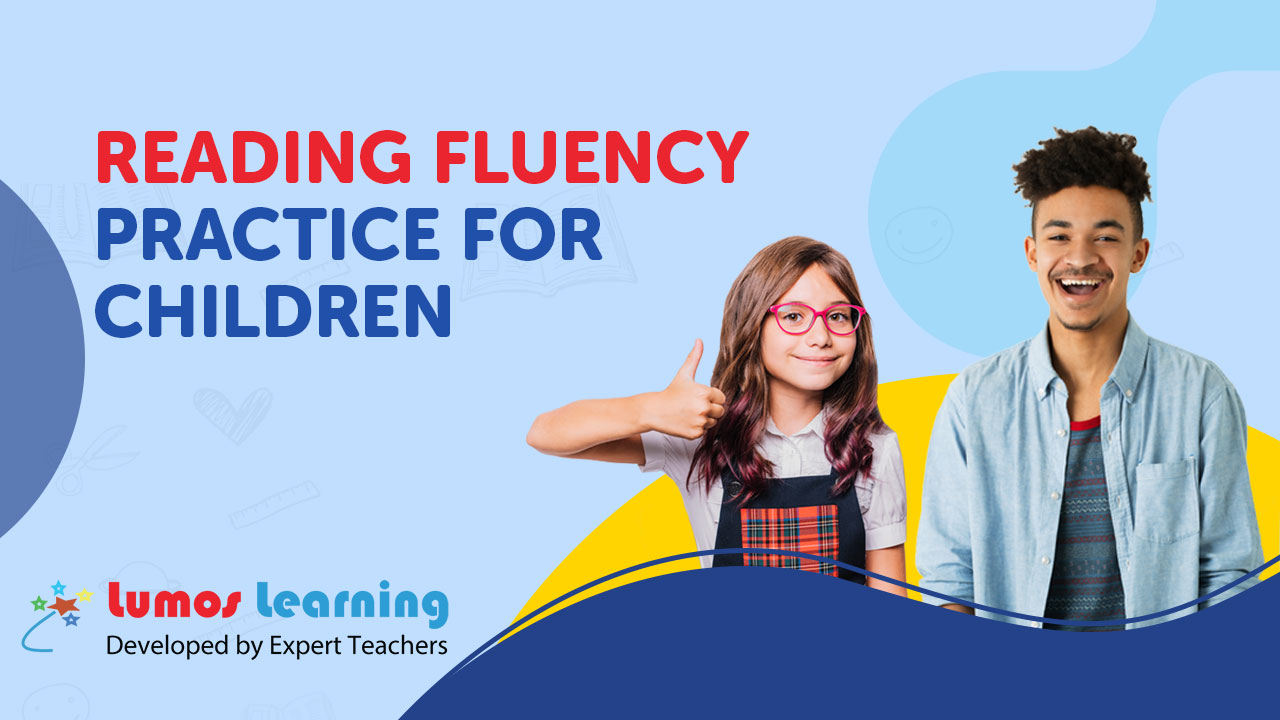
Reading fluency is defined as accurately reading passages at a conversational rate. It is a critical element of reading that helps students develop their comprehension skills. And to best develop reading fluency, students need a robust instruction program to help them step by step.
An effective reading fluency instruction program must include five critical components: independent reading, vocabulary practice, read-along activities, repeated reading exercises, and comprehension tests.
Lumos Reading Buddy is a digital learning program that focuses on reading fluency instruction. It covers all of these attributes to ensure that students learn and retain fluency regardless of their initial skill level.
An effective reading fluency instruction program must include five critical components: independent reading, vocabulary practice, read-along activities, repeated reading exercises, and comprehension tests.
Lumos Reading Buddy is a digital learning program that focuses on reading fluency instruction. It covers all of these attributes to ensure that students learn and retain fluency regardless of their initial skill level.
Let’s look at these attributes in detail and understand how Lumos Reading Buddy Program incorporates them into the learning cycle framework.
1. Independent Reading
Independent reading involves little to no guidance or feedback for students. They are expected to read on their own and boost their comprehension. This practice has long been used to develop fluency and reading skills even in students lagging in critical alphabetic and word reading skills.
The Lumos Reading Buddy program incorporates independent reading as the first step towards building fluency through their Cold Reading exercise. There is also a feature that allows students to record their reading activity and listen to it later.
2. Vocabulary Practice
Vocabulary learning tools are critical components of every effective reading fluency instruction program. It involves using word-learning strategies to promote students’ understanding and use of unfamiliar words.
Vocabulary practice is the next step in the Lumos Reading Buddy program and is incorporated through the Lumos FlashCube. This step provides students with a list of new or difficult words from the passage they read during Cold Reading. Students can then use FlashCube to learn the meaning, pronunciation, and uses of these new words.
3. Read-Along
Guided oral reading practice is another element of reading fluency instruction that helps students learn proper phrasing and expression.
The Lumos Reading Buddy program includes a Read-Along activity wherein students can read with a computer-aided voice or teacher-recorded audio.
4. Repeated Reading
Repeated reading instruction involves multiple opportunities for students to practice what they’ve learned and develop speed and accuracy.
In the Lumos program, students practice their lessons during the Hot Reading activity. This involves re-reading the text in the Hot-Reading activity, this time without any modeling assistance.
5. Reading Comprehension
Reading comprehension is the ability to understand a grade-level appropriate text. It is often tested through recall or retelling activities. It is the final step in any reading fluency instruction that determines the program’s effectiveness.
A reading comprehension test is the last step in the Lumos Reading Buddy program. It involves a quiz that evaluates the student’s understanding of the reading lessons. Finishing the test completes a single learning cycle of the Reading Buddy program.
Final Thoughts
Through research-based findings, the Lumos Reading Buddyprogram utilizes all critical attributes of reading fluency instruction in each of their learning cycles. The framework and activities built around these attributes help students improve their listening, reading, and speaking skills.
Many educators struggle to incorporate online and offline learning programs and instructions into their curricula. Check out more information about what constitutes hybrid learning and how to simplify it!
1. Independent Reading
Independent reading involves little to no guidance or feedback for students. They are expected to read on their own and boost their comprehension. This practice has long been used to develop fluency and reading skills even in students lagging in critical alphabetic and word reading skills.
The Lumos Reading Buddy program incorporates independent reading as the first step towards building fluency through their Cold Reading exercise. There is also a feature that allows students to record their reading activity and listen to it later.
2. Vocabulary Practice
Vocabulary learning tools are critical components of every effective reading fluency instruction program. It involves using word-learning strategies to promote students’ understanding and use of unfamiliar words.
Vocabulary practice is the next step in the Lumos Reading Buddy program and is incorporated through the Lumos FlashCube. This step provides students with a list of new or difficult words from the passage they read during Cold Reading. Students can then use FlashCube to learn the meaning, pronunciation, and uses of these new words.
3. Read-Along
Guided oral reading practice is another element of reading fluency instruction that helps students learn proper phrasing and expression.
The Lumos Reading Buddy program includes a Read-Along activity wherein students can read with a computer-aided voice or teacher-recorded audio.
4. Repeated Reading
Repeated reading instruction involves multiple opportunities for students to practice what they’ve learned and develop speed and accuracy.
In the Lumos program, students practice their lessons during the Hot Reading activity. This involves re-reading the text in the Hot-Reading activity, this time without any modeling assistance.
5. Reading Comprehension
Reading comprehension is the ability to understand a grade-level appropriate text. It is often tested through recall or retelling activities. It is the final step in any reading fluency instruction that determines the program’s effectiveness.
A reading comprehension test is the last step in the Lumos Reading Buddy program. It involves a quiz that evaluates the student’s understanding of the reading lessons. Finishing the test completes a single learning cycle of the Reading Buddy program.
Final Thoughts
Through research-based findings, the Lumos Reading Buddyprogram utilizes all critical attributes of reading fluency instruction in each of their learning cycles. The framework and activities built around these attributes help students improve their listening, reading, and speaking skills.
Many educators struggle to incorporate online and offline learning programs and instructions into their curricula. Check out more information about what constitutes hybrid learning and how to simplify it!
